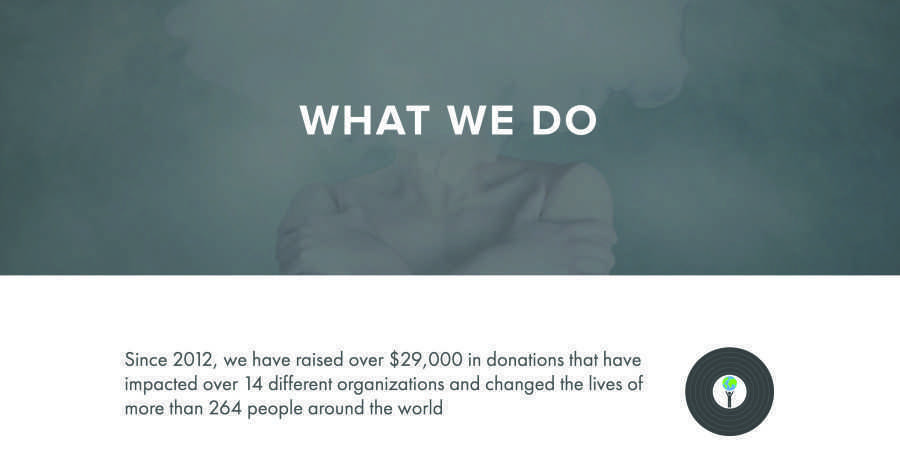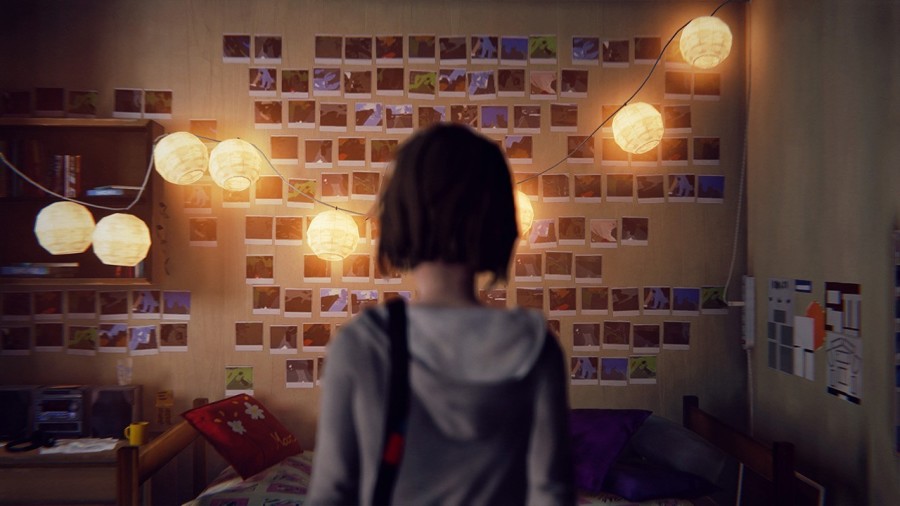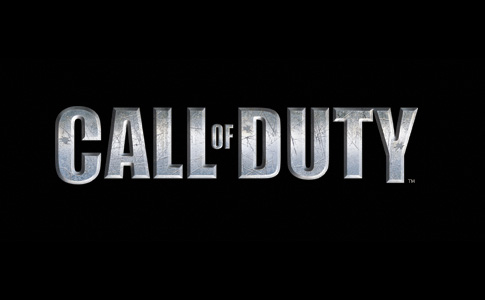Art-ivism: Mental Health
April 9, 2015
Conversations about mental illness have long been neglected due to the overwhelming stigma surrounding disorders such as anxiety and depression. Contemporary artists are using their platforms to increase education and awareness to begin those difficult conversations. Ranging from the video game “Life is Strange,” where the player is placed in a suicide prevention scenario, to artists like Lana Del Rey speaking about struggles with depression, the arts are paving the way for these conversations.
NYU student record label gives back
OneReasonRecordings is the world’s first social label, defining themselves as “a music label dedicated to social justice and awareness.” Johnathan Chen, a senior majoring in food studies at the Steinhardt School of Culture, Education and Human Development, founded the organization during his freshman year at NYU.
Since 2012, OneReasonRecordings has increased awareness about social and humanitarian issues worldwide, raising over $29,000 for various charities through its powerful combination of music and philanthropy.
“What we do is partner with musicians around the country that focus on topics that we choose every year,” Chen said.
The charity does year-long programs that focus on a specific social justice issue, with this year’s focus being hunger. All programs the organization creates focus on that topic, and at the end of the year, all proceeds go toward their partner charities. One of the nonprofit’s main fundraising tools is an annual compilation album.
“In terms of the artists, it really varies,” Chen said. “We’ve had some from the United States, some from overseas, some that I do know, local artists and even NYU students that make music with us.”
Along with being charitable to those in need around the world, OneReason is exceedingly charitable to their artists.
“I think it’s hard for most artists to make a living in a major record label because an artist signs on and gets an advance, where you essentially do what they say, and stuff in a way that the label is happy with,” he said. “With an advance, an artist is extremely limited and we find it’s just like a really bad loan.”
“It’s not money that’s in the pocket,” Chen continued. “Rather, it’s money that will eventually go back to the record label, and it’s all used for music production, the videos and the promotion. It’s like a band telling their audience ‘We made all this music, we got all these awards, but we’re still in debt to our record label.’”
The idea of OneReasonRecordings revolves around Chen’s charitable experiences, coming from a family that was involved in philanthropy. Chen claims this is what led him to start his foundation.
“In New York, the environment was extremely different,” Chen said. “You pass homeless people on the street, something I’d never seen before. For me, that was really a shock that pushed me to make some kind of impact. That commute from Third North to campus, seeing all these people pass by, it came to the point where everyone was used to it. I couldn’t believe no one was doing anything about it.”
After living in New York and witnessing the different attitudes toward homeless people, Chen has learned from these experiences.
“You can make that something positive and make an impact out of it and get it going,” Chen said.
A version of this article appeared in the Thursday, April 9 print edition. Email Kieran Graulich at music@nyunews.com
Artists confront mental illness
From the infamous members of the 27 Club to Ke$ha and other celebrities, the music industry is creating a better environment for open discussion about mental health, despite activism lacking at times. Openness aside, mental disorders have always trod murky ground as far as medical conditions go, partially due to them being difficult to diagnose, but more so because they are misperceived as frivolous rather than serious problems.
Lana Del Rey’s sad girl persona has come under scrutiny, for example, as a glamorization of depression, and a construction of an image rather than soul baring artistry. Del Rey has always been polarizing, but when her open battle with depression is minimized as a stunt, critics must step back and realize nobody is being as transparent about these issues as she is. Her vulnerability being labeled as false only damages how people perceive mental illness.
Australian hitmaker Sia has been making headlines lately for keeping her face covered in performances and public appearances, bringing to the public eye a struggle with social anxiety. She refuses to photograph for magazines — even appearing on the cover of Billboard with a bag over her head — and prefers to use stand-ins when it comes to music videos like the one for “Chandelier,” which features an interpretive dance by Maddie Ziegler.
Sia’s public disregard of her shyness and her own fame are accompanied by past struggles with depression, alcoholism and drug abuse. But public reception to her openness has been more positive than Del Rey’s. Critics need to realize both artists are exposing vulnerabilities that correlate with their struggles with mental health, which could encourage others to come forward and help bring validation to the often misunderstood aspects of mental health.
Having influential musicians write songs about their depression and bring their battles with mental demons to the forefront is a phenomenal way to heighten the conversation and help those that need to be helped.
A version of this article appeared in the Thursday, April 9 print edition. Email E.R. Pulgar at [email protected]
Video game carefully handles suicide
As video games have developed into an art form, there have been sincere efforts for games to tackle serious subjects — with varying degrees of success. A perfect example of this difficult transition is “Life is Strange,” an episodic adventure game centered on the high school challenges of a girl who can manipulate time. In the latest episode, the game took on suicide prevention with mixed results.
The installment showed protagonist Maxine attempting to help a friend who had just been publicly humiliated after a video of her drugged at a party was leaked. Despite gamers’ best efforts, the friend becomes desperate and the bullying pushes her to climb to a building’s roof. The game forces Maxine to watch the friend jump twice, then the player is able to make it up to the roof with one chance to talk her off the ledge.
Forcing the player to tackle this tragically realistic scenario demonstrates the intense amount of influence video games can have. By putting the player in the shoes of the persuading character, the game has more impact on the person playing than many other mediums allow. The level of maturity and seriousness the situation is meant to be handled with demonstrates that video games can be more than just a fun way to pass the time. They can help players to handle life issues.
When the level ends, the game presents statistics on choices other players made. The final bar shows how many players saved their friend and how many could not. There is something off-putting about turning suicide into a high score. While the developers took these matters very seriously, they did not take into account the potentially unpleasant nature of this rating system. The concept of competition, high scores and rankings are so ingrained in gaming culture that developers include them without thinking of their implications.
Gaming has proven a powerful medium when it comes to artistic advocacy and commentary. In “Life is Strange,” maturely depicting a suicidal situation and its solutions is heroic, but if gaming is to evolve, the industry must learn when to remove its conventional chains and when to be direct about the messages it tries to present. As long as there is agency and immersion, video games have the ability to impact the viewer like no other medium.
A version of this article appeared in the Thursday, April 9 print edition. Email Carter Glace at [email protected]
Violent video games affect mental health
Controversy over violent video games dates back to 1976, when the arcade game “Death Race” was pulled from markets after being criticized for promoting violence. In the game, players run over monsters with a car. More recently, first-person shooter games, including “Call of Duty” and “World of Warcraft,” have sparked research into the effects of violent video games on mental health. After tragedies such as Columbine and Newtown, many question whether violent games lead to an increased likelihood of civilian violence.
In 2002, Iowa State University professors Brad J. Bushman and Craig A. Anderson published a study showing that playing violent video games increases aggression levels. The 224 participants were asked to play either a violent or non-violent video game. After gameplay they were to listen to a story and choose an appropriate ending. Those who played the violent game were more likely to give an aggressive or violent ending to the story. Bushman and Anderson’s study suggests that violent games teach children to react aggressively when they feel wronged.
However, in the March 2014 edition of the Journal of Personality and Social Psychology, Oxford University researcher Andrew Przybylski noted that all video games cause increased levels of aggression, regardless of the video game’s content. He argues that players feel frustration after losing any video game, a phenomenon known in the gaming world as rage-quitting.
Violent video games glorify excessive violence and trivialize death. This could, in turn, desensitize players to the consequences of brutal violence. Even so, violent video games cannot be the sole culprit. Mental health is dictated by genetics, familial situations, peer networks, school environments, workplace conditions and several other factors. While first-person shooter games might add to poor mental health and increased levels of aggression, they are not the only contributors.
The video game industry can help alleviate these effects by clearly labeling game packages with the amount of violence in each game. Games can also give players the option to opt-out of the games’ more disturbing aspects and include disclaimers to remind players that actions within the game should not be imitated in real life. The video game industry should also target its advertising campaigns toward older gamers, who might be less impressionable than younger children and teens.
A version of this article appeared in the Thursday, April 9 print edition. Email Jessica Tien at [email protected]
‘If You Feel’ raises funds, awareness
The dialogue the mainstream public maintains with mental illness has proven to be limited and hesitant. One of the biggest obstacles to treating depression, anxiety and various other mental disorders is the stigma. These diseases are associated with fear and apathy, and as long as the stigma remains, the conversation remains jilted and lives remain at stake. Jamie Tworkowski attempts to shake this standard with his book “If You Feel Too Much,” which will release on May 19.
Tworkowski is the founder of To Write Love on Her Arms, a nonprofit organization that focuses on the mental illness stigma and raises funds for treatment for those who seek it. A dollar for each presold book will go toward funding TWLOHA.
Tworkowski’s new publication has similar goals to TWLOHA, but is more accessible by featuring a collection of blog posts and isolated stories of struggle that hopefully can connect a larger audience and get people talking about the taboo of mental health.
The stakes for “If You Feel Too Much” are high. Somebody has to initiate this conversation between society and mental illness, and spearheading this conversation comes with a risk. There is no guarantee that a book will encourage someone to tell his or her story, and there is no promise that people can become enlightened on the condition of the mentally ill, but it is important to try nonetheless.
As long as someone can connect to Tworkowski’s work, there is potential for change. And with an issue as serious as mental health, the potential for change suggests a will for change itself, making “If You Feel Too Much” a step toward the conversation that society needs to have, in addressing mental health and making those who suffer feel more comfortable openly discussing their disorders.
A version of this article appeared in the Thursday, April 9 print edition. Email Mary Hess at [email protected]





MZ • Apr 12, 2015 at 7:54 am
I suffer from bi-polar disorder and was happy to read these articles. Thank you for bringing attention to mental illness and the damage of stigmatizing or tribializing such disorders.